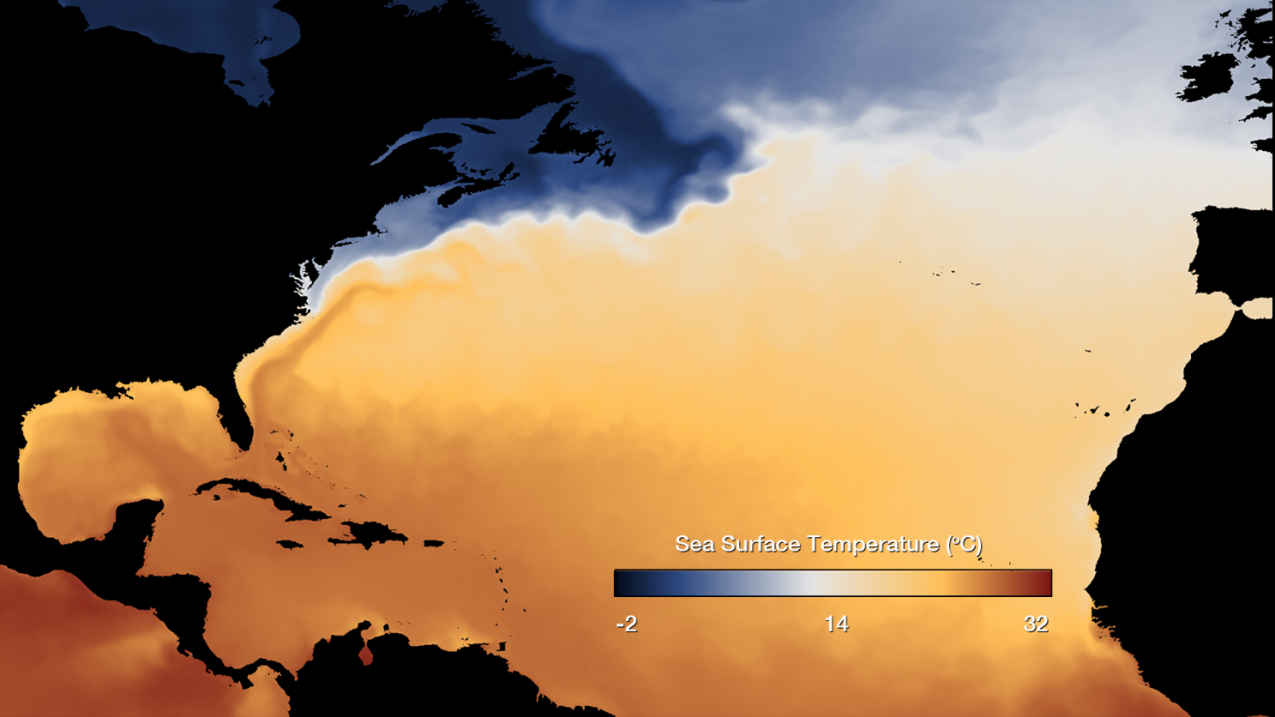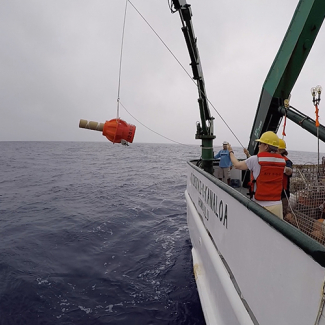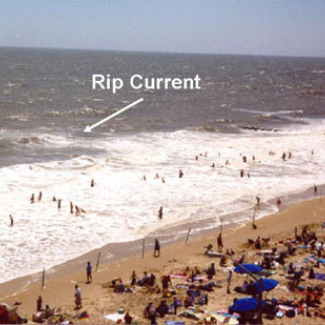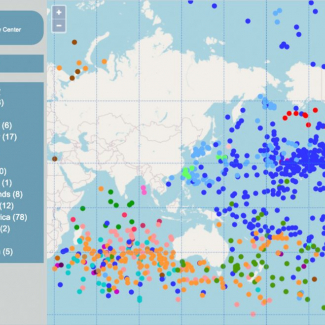Keep exploring
Find even more resources on ocean currents in our searchable resource database.
Ocean water is on the move, affecting your climate, your local ecosystem, and the seafood that you eat. Ocean currents, abiotic features of the environment, are continuous and directed movements of ocean water. These currents are on the ocean’s surface and in its depths, flowing both locally and globally.

Map of temperature of the North Atlantic Ocean shows the warm Gulf Stream current along the East Coast of the United States transporting heat northward towards the cooler high latitudes. (Image credit: NOAA)
Keep exploring
Find even more resources on ocean currents in our searchable resource database.
Winds, water density, and tides all drive ocean currents. Coastal and sea floor features influence their location, direction, and speed. Earth’s rotation results in the Coriolis effect which also influences ocean currents. Similar to a person trying to walk in a straight line across a spinning merry-go-round, winds and ocean waters get deflected from a straight line path as they travel across the rotating Earth. This phenomenon causes ocean currents in the Northern Hemisphere to veer to the right and in the Southern Hemisphere to the left.
Drifters, buoys, Argo floats and more help scientists monitor the global ocean, including areas that are difficult to travel to via research ship.
Large-scale surface ocean currents are driven by global wind systems that are fueled by energy from the sun. These currents transfer heat from the tropics to the polar regions, influencing local and global climate. The warm Gulf Stream originating in the tropical Caribbean, for instance, carries about 150 times more water than the Amazon River. The current moves along the U.S. East Coast across the Atlantic Ocean towards Europe. The heat from the Gulf Stream keeps much of Northern Europe significantly warmer than other places equally as far north.
Deep ocean currents
Differences in water density, resulting from the variability of water temperature (thermo) and salinity (haline), also cause ocean currents. This process is known as thermohaline circulation. In cold regions, such as the North Atlantic Ocean, ocean water loses heat to the atmosphere and becomes cold and dense. When ocean water freezes, forming sea ice, salt is left behind causing surrounding seawater to become saltier and denser. Dense-cold-salty water sinks to the ocean bottom. Surface water flows in to replace the sinking water, which in turn becomes cold and salty enough to sink. This "starts" the global conveyer belt, a connected system of deep and surface currents that circulate around the globe on a 1000 year time span. This global set of ocean currents is a critical part of Earth’s climate system as well as the ocean nutrient and carbon dioxide cycles.
Biological influence
Ocean currents are an important abiotic factor that significantly influences food webs and reproduction of marine organisms and the marine ecosystems that they inhabit. Many species with limited mobility are dependent on this "liquid wind" to bring food and nutrients to them and to distribute larvae and reproductive cells. Even fish and mammals living in the ocean may have their destinations and food supply affected by currents.
Upwelling currents bring cold nutrient-rich waters from the ocean bottom to the surface, supporting many of the most important fisheries and ecosystems in the world. These currents support the growth of phytoplankton and seaweed which provide the energy base for consumers higher in the food chain, including fish, marine mammals, and humans.
EDUCATION CONNECTION
Educators can use ocean currents to help students learn and appreciate the interaction of Earth's systems and how scientists study these processes with drifting buoys, sound monitors, and other methods. The lesson plans, labs, and other resources in this collection can help students understand how distant abiotic factors, such as water density, Earth’s rotation, and ocean currents can impact local climate and biomes, the beaches we visit, and the seafood that we eat.
Keep exploring
Find even more resources on ocean currents in our searchable resource database.





